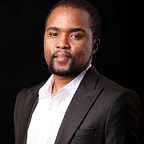Introducing QUAMAC : Crowd-Source “Production”
To tell a good story, you need a crowd
Before Steve Jobs “believed” in himself, he believed in people.
After Steve Jobs “believed” in himself, he lost faith in people.
Says something, d‘n’t it?
Production for Product
It is indeed rather odd that Steve Jobs would or did say things like :
“Some people say, “Give the customers what they want.” But that’s not my approach. Our job is to figure out what they’re going to want before they do. I think Henry Ford once said, “If I’d asked customers what they wanted, they would have told me, ‘A faster horse!’” People don’t know what they want until you show it to them. That’s why I never rely on market research. Our task is to read things that are not yet on the page.”
when in fact, he did “copy” various ideas from children, Xerox, Unix, OO, Steve Wozniak, and the like.
We must understand, that to produce usable products, we need various “forces” in the universe to align: markets, regulations, global access, sales, messaging, engineering, tools, people, and “material”.
Yes, it’s true that “nothing new” comes from a page… but “everything” comes from the earth, people, and “time”. There is no need to be mystical, cryptic or abstract about the origin of “things”, ideas or products. Above all, engineering always forces one back to reality : physics, mathematics and material.
It is the “people”, who produce, using material, constraints and knowledge that they have available. As a result, it is by the people that we must “plan” production or the release of products. After all, all of this is being done for the people!
Misconceptions
Firstly, as engineers and product-makers we must be careful of “over-engineering” a product. But how can we tell when we are about to do it? Most likely by “trialing” the product yourself or with one’s closest confidant, probably of the “non-engineer” type!
Secondly, we must admit that engineering is actually not that “hard”. The reason “production” or “engineering” look hard is that it often requires some “brick-laying” level proficiency to comprehend; but comprehension is not the same thing as effectiveness or even efficiency. Truly, engineering is about tools, and tools that people need for everyday use; yeah, even a “mud hut” house is a tool!
Thirdly, there is no real “need” for engineering without people; without sales, and without “appeal”/demand. What makes one a “brilliant” engineer then, aught not to be “patents”, “algorithms”, or even “technologies” invented, it aught to be, simply, products that sell (and also of high quality). It is indeed, in this sense, that Steve Jobs was the best engineer in recent history!
QUAMAC, the Concepts
Borrowing from the worlds of Quantum Mechanics and Physics, it is incumbent, importune, and imminent that we codify our newly emerging world of engineering and production as “Quamac” codified.
There are THREE main elements to “Quamac” Engineering:
- Design is Production, and there is no need to “test” a product, unless it was poorly designed!
- Product Sales must be “Expensive”; meaning, attracting “expensive” clients must always be the goal of the product engineering and sales teams.
- “Prepaid” is for marketing; meaning, attracting “cheap” clients must be via the widely accessible product experience, not via “ads”/marketing. Payments, even if small, should always be part of the “product” brand experience.
Of course, this sounds simplistic. But that is only the case when and if one ignores the staggering implications of these points in product engineering.
Ignore, if you must; but don’t say I didn’t warn you!
